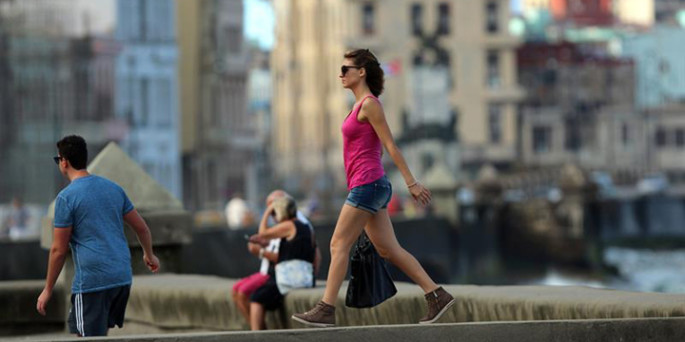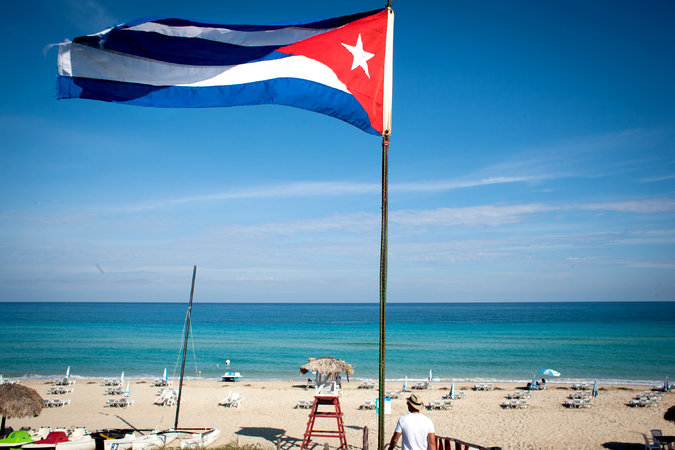
Ready to go to Cuba? It has gotten even easier
Planning a trip to Cuba? These days, Americans who want to visit the island can book a room on Airbnb.com, the home-stay website, and browse flights on CheapAir.com. In the fall, they may even be able to set sail by ferry from Miami at dusk and chug into the Bay of Havana in time for breakfast.
These are options unimaginable six months ago, and they reflect the growing range of travel choices borne of the détente between the two countries.
Since President Obama announced on Dec. 17 that his government would restore diplomatic relations with Cuba and further ease restrictions on travel there, Americans have been traveling to Cuba in perhaps their biggest numbers since Fidel Castro’s 1959 revolution.
“Everybody wants to go,” said Vivian Mannerud, chief executive of Airline Brokers Company, a travel agency that specializes in Cuba. She said Airline Brokers’ business had increased by about a third since December. “People see that this is all going to open up and they want to see Cuba before it becomes Cancún.”
Eager for a piece of the action, airlines, hotels, cruise and ferry operators and travel agencies — online and off — have been scrambling to offer service in Cuba.
Charter companies have opened new routes, providers of cultural and educational trips have added different kinds of tours, some online travel agents have begun taking Cuba-related bookings and hundreds of Cubans have hung out signs to welcome Americans spilling out of the island’s overstretched hotel sector.
And as Havana prepares for its 12th Biennial, which opens May 22 and will include an exhibition of works from the Bronx Museum of the Arts, groups of art fans, curators, museum directors and collectors are swelling the crowds.
Still, for Americans, travel to Cuba remains far from normal. Tourism is banned under the United States embargo, and Americans who wish to visit must qualify in one of 12 categories of licensed travel (including people-to-people trips).
Despite President Obama’s decision to remove Cuba from a list of states that sponsor terrorism, financial restrictions remain, in most cases preventing travelers from making payments online or by American credit card.
But as new services emerge, travel between the two countries is becoming more straightforward than at any point since sanctions were introduced in the early 1960s.
Getting there is still expensive: There are no direct commercial flights from the United States to Cuba, and it could be a year or more before agreements between the countries’ aviation authorities make them possible. Charter flights cost about $450 to $500 round-trip from Miami to Havana or $850 round-trip from New York.
Despite the cost, they are the most popular option. Of an estimated 600,000 passengers from the United States who visited Cuba last year, including about half a million Cubans and Cuban-Americans, some 365,000 passengers used charter flights, according to data compiled by OAG, a British-based company that monitors air traffic.

And the number of routes is growing: Over the last few months, charter companies have announced new flights from Orlando, Tampa, New Orleans and New York.
In February, CheapAir.com began allowing customers to book flights to Cuba, either on licensed charters or through third countries. A flight from New York to Havana via Miami (outbound) and Mexico City (return), for example, with a combination of Interjet, CTS Charters and American Airlines, is listed at over $1,200.
A less expensive — and more romantic — option could be available in the next few months after the Treasury Department this month issued licenses to at least three Florida companies (Baja Ferries, Havana Ferry Partners and Airline Brokers Company) to offer services between the United States and Cuba.
Now that it is easier to get to Cuba, the challenge is finding somewhere to sleep.
Travel organizers operating in Cuba say that a sharp increase in American visitors, and in Europeans and Canadians eager to see Cuba “before it changes,” has stretched Cuba’s tourism infrastructure almost to its limit.
“You can scarcely find a decent hotel in Havana in May,” said Steve Cox, executive director of International Expeditions, which recently obtained a license to run cruises, adding, “Even June is tight.”
Travel organizers said that there were shortages of hotel rooms, guides, translators and buses.
Stuck for hotel space, more travelers are renting rooms or houses from Cubans. That became easier this month after Airbnb, the San Francisco-based home rental company, began listing about 1,000 Cuban accommodations on its website in April. (Cubans also rent through less-known sites like Casaparticular.com or Cas
Geo Darder, who organizes about four trips per month to Cuba through the Copperbridge Foundation, said Cuban authorities were beginning to promote new destinations like the colonial town of Remedios, as alternatives to Havana and Trinidad, in the center of the island.
“It makes sense,” said Mr. Darder, president of the nonprofit foundation based in Miami. “Just as you can only fit a size-7 foot into a size-7 shoe, there are only so many people you can fit into one city.”
(From: The New York Times)

